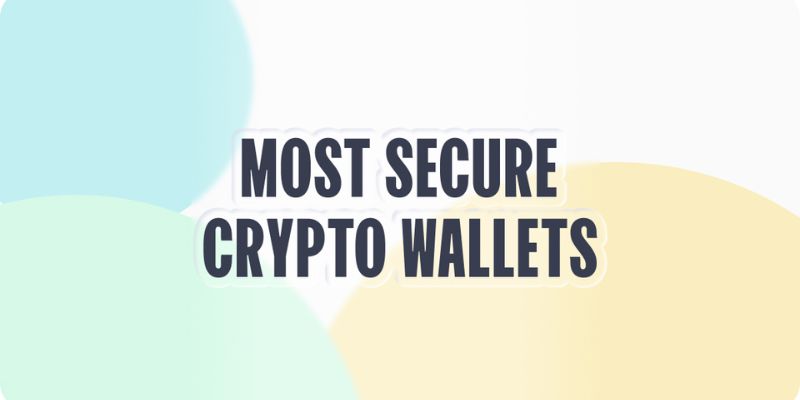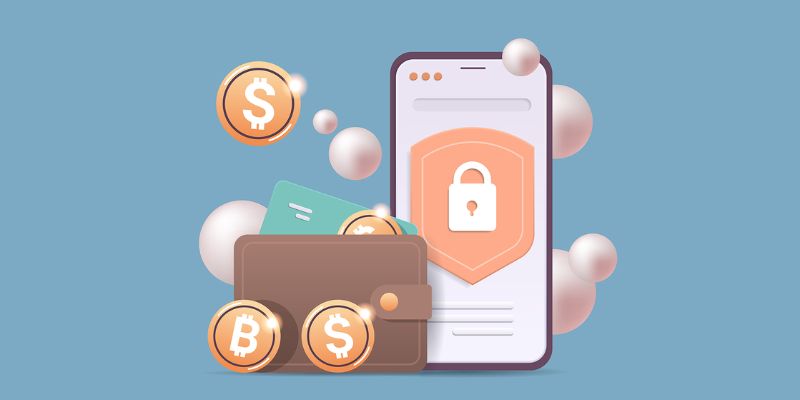Most Secure Crypto Wallets: Imagine a vault so tight, not even the slickest cyber-thieves could crack. That’s what top-notch crypto wallets offer—a fortress for your digital gold. But how do you pick the ironclad among the endless sea of options? Stick with me as we dissect the heavyweights in crypto security, ensuring your stash stays only yours. We’ll delve into the hot vs. cold wallets saga, pit hardware giants like Ledger and Trezor against the rigors of cyber safety, uncover the latest security tech, and master the fine art of key management. Lock in. Your treasure needs that armor.
Understanding the Landscape: Hot vs Cold Wallets
The Crucial Differences Between Hot and Cold Storage
Hot and cold wallets are like day and night in the crypto world. To keep it simple, hot wallets connect to the internet, while cold wallets do not. This matters because hot wallets, being online, are more at hand for quick trades and payments. But, with this ease comes risk; they can be targets for online thieves. Cold wallets, on the other hand, are offline, making them less prone to hacks. Think of cold wallets as safe vaults for your digital coins.
Now let’s talk about safety and security. For the safest cryptocurrency wallets, many turn to cold storage options. Here’s why: when your wallet isn’t connected to the internet, hackers have a much tougher time trying to break in. So, cold wallets are the fortress protecting your crypto wealth. Options like paper wallets or hardware crypto wallets are popular types of cold storage. They’re physical objects – something you can hold. And because they’re not online, they’re safe from digital attacks.
When we look at hot wallets, we see they are often apps on phones or computers. They’re super handy for buying a coffee with Bitcoin or trading some Ether on the fly. Hot wallets include mobile, desktop, and even web wallets. Secure digital currency storage here means strong passwords and always using trusted networks. But even then, hot wallets face more risks than cold ones since they’re linked to the web.

Comparing the Security of Hot and Cold Wallets
Let’s dive into which one is more secure: hot or cold wallets? Cold wallets are the top pick for long-term storage. The best cold storage wallets are often hardware ones, like the Ledger Nano S or Trezor Model T. They’re built to be fortresses for your crypto, far from the reach of internet marauders. You might hear about Ledger Nano S features, like its secure chip, or the Trezor Model T review praising its intuitive touchscreen.
Encrypted private keys in these devices mean that only you have access. Biometric authentication in wallets, like a fingerprint scan, adds even more protection. For an extra layer, multi-signature security protocols require more than one person to approve a transaction. This is great for teams or families managing crypto together.
But cold wallets aren’t perfect. They can be lost, damaged, or even stolen physically. If that happens, having a solid crypto wallet backup solution is crucial. Recovery phrase protection, usually a string of words, acts as a key to regain access. It’s like a backup plan for your backup plan. And with cold wallets, you’re keeping this phrase offline and out of reach too.
Now back to hot wallets. Their security has come a long way. Two-factor authentication for crypto, automatic sign-outs, and alerts for unusual activity help protect your assets. Mobile wallet security features have advanced too, so you can carry a piece of security with you. But these wallets still face risks from phishing, malware, and other cyber threats.
So, when you hear about wallet security breach cases, they often involve hot wallets. Hackers find ways to exploit online weaknesses. It’s why you need to be extra careful. Always check for the latest wallet security ratings and never fall for too-good-to-be-true offers. Being alert is the best defense.
Finally, don’t forget about the human element. Whether it’s a hot or cold wallet, your actions can make or break its security. Choose your wallet based on your personal crypto habits, and keep those security measures tight!
Analyzing Top Hardware Crypto Wallets
Ledger Nano S: Features and Security Appraisal
The Ledger Nano S stands among the best cold storage wallets today. It comes packed with top-notch security. Perhaps you’re asking, “What makes the Ledger Nano S secure?” First off, it has an embedded secure chip. This chip keeps your private keys offline. That means hackers can’t reach them.
For those not sure about what private keys are, think of them as your crypto’s lock and key. If you lose them, you lose access to your funds.
Now, back to the Nano S features – it supports multi-signature protocols. This means you can set up your wallet to need more than one key to make transactions. It is like needing two or more keys to unlock a treasure chest, adding an extra layer of security.
When it comes to backup, the Ledger Nano S gives you a recovery phrase. You use this if your wallet is ever lost or broken. But please, keep this phrase somewhere safe! If it gets into the wrong hands, they can sweep your wallet clean.
Another great feature is its simplicity. It connects to your computer through a USB port and has a clear display. This lets you check transactions with ease. Plus, to confirm transactions, you must physically press buttons on the device. This feature, known as physical confirmation, keeps remote hackers at bay.
Overall, the Ledger Nano S is a solid pick for secure digital currency storage. It’s simple, has strong security, and gives you peace of mind for your digital fortune.

Trezor Model T: Comprehensive Review
On the flip side, we have the Trezor Model T. It’s also a heavy hitter in the realm of top hardware crypto wallets. Its security is rock-solid. The Trezor Model T is like a digital bank vault for your coins. It keeps your digital wealth safe with multiple layers of protection.
First things first, it has a touch screen for improved user experience. You can simply tap and swipe to manage your crypto. The Trezor encrypts your private keys inside the device, just like the Ledger. It never lets them touch the internet. This way, online thieves have zero chance to get them.
Now, what about recovery phrases? Yes, the Trezor Model T has that covered. You get a recovery seed when you set up your device. Always remember, your recovery seed is the master key to all your funds! So, it’s critical to protect it from prying eyes.
Biometric authentication isn’t a part of the Trezor Model T just yet. However, it does offer two-factor authentication for extra account security. This is like adding a second door to your cyber vault.
The Trezor also follows the multi-signature security protocol. With this, more than one person needs to approve a transaction. It’s perfect for businesses or groups managing a crypto fund.
To wrap up, picking the right wallet is all about balancing what you need. Think of your habits, your tech know-how, and how much you want to keep safe. Both the Ledger Nano S and Trezor Model T offer strong fortresses for your digital coins.
Choose wisely, and remember: in the world of crypto, your wallet’s security is king.
Innovations in Crypto Wallet Security
Multi-Signature Security Protocols and Their Importance
Think of your crypto like a treasure chest. To keep the chest safe, you need several keys. That’s what multi-signature security does. It means you need more than one key to open your digital wallet. This way, if someone steals one key, they can’t get to your coins. It’s like having a lock with two keyholes. Both keys must turn to open up your funds.
Most secure wallets now have this as an option. It’s smart to use it, especially if you’re keeping a lot of digital cash. With this setup, thieves have a harder time breaking in. It’s a strong layer of defense. It can save you a lot of trouble down the road.
The Evolution of Biometric Authentication in Crypto Wallets
Think about unlocking your phone with a fingerprint. Cryptocurrency wallets are getting there too. Biometrics means using parts of your body, like fingerprints, to get into your wallet. It’s more secure than just a password. Why? Because it’s about what you are, not just what you know.
Your body has unique features no one else has, like fingerprints. Wallets using this tech are among the safest. Biometrics make it tough for thieves. They can guess a password, but they can’t fake your fingerprint easily. That’s why wallets with this tech get top marks for safety.
So, when you look for a secure wallet, think about these cool features. They could mean the difference between keeping your digital cash safe or losing it to the bad guys.

Best Practices for Cryptocurrency Key Management
Implementing Effective Crypto Wallet Backup Solutions
Let’s talk about keeping your digital gold safe. I mean, you lock your front door, right? So, we smack down a strong lock on our crypto too. Say it with me: back it up! I’m bursting at the seams to tell you how. For starters, get into the groove of regular backups. Don’t let your guard down just because things look calm.
Got a mobile wallet? Super – snap a backup. Software wallet on your laptop? Check – backup that bad boy. And if you’re fancy with the best cold storage wallets, don’t slack. Write down your seed on paper or, better yet, stamp it on metal. Why metal? Water, fire, and age won’t touch it. It’s the Superman of backups.
Oh, and hey, don’t you forget about encrypted private keys! Yes, encryption, my pals. Make them keys tough nuts to crack. Pop them in a USB drive or cloud storage, but keep that password strong and safe.
Now, don’t just back up half-hearted. Do a little dance and backup the full wallet. Some wallets only need you to back up once. They use the same master seed for all future keys. Magic? No, it’s math and it’s marvelous.
And listen up, it’s not a party till you test your backup. Restore your wallet from the backup to ensure it works. Because what’s worse than losing your crypto? Thinking you’re safe but actually aren’t. Not cool.
The Art of Crafting a Resilient Recovery Phrase Strategy
I’m dropping another truth bomb – recovery phrases. These are your crypto life vests, your bail-out buddy when things go south. These phrases, usually 12 to 24 words, need TLC – tender loving care.
Where do you store these precious words? First, rule out online. Hackers love the online treasure hunt. Instead, write your recovery phrase down. Use pencil-free paper because ink lasts longer. But again, metal owns the game. It laughs in the face of disaster.
Get creative with your hiding spots. Some people even split their phrases up. That way, a thief would need to find all pieces to get the full phrase. Like a scavenger hunt, but with higher stakes.
Ever heard of the safest cryptocurrency wallets using multi-signature protocols? These wallets need more than one key to open the vault. Just imagine, even if someone gets one key, they’re still one, two, or even five steps away from your treasure. That’s what I call teamwork for security.
Let’s circle back to why this all matters. It’s not just tech talk – it’s about peace of mind. With good backups and a solid phrase strategy, you sleep better at night. And when you sleep better, you dream better. And who doesn’t want sweet dreams of a secure digital fortune?
All set with backups and phrases? Next, you check on trustworthiness of wallet providers. Then you’re golden. Because in the world of bits and coins, being smart is being strong. And you, my friend, just got a little stronger today.
In this article, we looked into hot and cold crypto wallets, learning key differences and what makes them secure. We also dived into the features of popular hardware wallets, such as Ledger Nano S and Trezor Model T. Plus, we explored new tech like multi-signature protocols and biometric security in protecting your digital coins. Lastly, we stressed the smart ways to back up your wallet and create strong recovery phrases. Remember, managing your crypto keys well is crucial for keeping your digital treasure safe. Stay smart, update your security steps often, and you’ll give your crypto the vault-like protection it deserves.
Q&A :
What are the features of the most secure crypto wallets?
When considering the most secure crypto wallets, look for features such as two-factor authentication (2FA), multi-signature support, cold storage options, hardware wallet support, and strong encryption methods. Additionally, advanced security measures like a secure PIN, biometric authentication, and compatibility with various operating systems can contribute to the safety of your digital assets.
How do hardware wallets enhance cryptocurrency security?
Hardware wallets, such as Ledger or Trezor, provide enhanced security for your cryptocurrencies by storing your private keys offline. This helps protect your funds from online hacking attempts, phishing sites, and malware. They are considered one of the most secure types of cryptocurrency wallets because they remain disconnected from the internet when not in use.
Can a mobile or online wallet be considered secure for storing crypto?
While mobile and online wallets offer convenience, they are typically less secure than hardware or paper wallets due to their constant connectivity to the internet. However, some mobile and online wallets implement additional security layers like 2FA, biometric verification, and automatic wallet backups, improving their security posture. Always ensure your wallet provider has a strong reputation and utilizes robust security measures.
What practices should I follow to keep my crypto wallet secure?
To maintain the security of your crypto wallet, frequently update your wallet software, keep your private keys offline and never share them, use strong, unique passwords, enable 2FA, and consider using a dedicated device for your crypto transactions. Additionally, be wary of phishing attempts and ensure you’re using a legitimate wallet app or website.
Are paper wallets still a safe storage option for cryptocurrency?
Paper wallets, when generated and stored correctly, can be a very secure method of storing cryptocurrency since they aren’t connected to the internet. However, they must be made on a malware-free computer and the private keys should be printed with a secure printer. Paper wallets should be kept in a safe and private location to prevent theft or physical damage. It’s important to note that while paper wallets are secure from digital threats, they are not as user-friendly for regular transactions and require careful handling to avoid loss or destruction.


